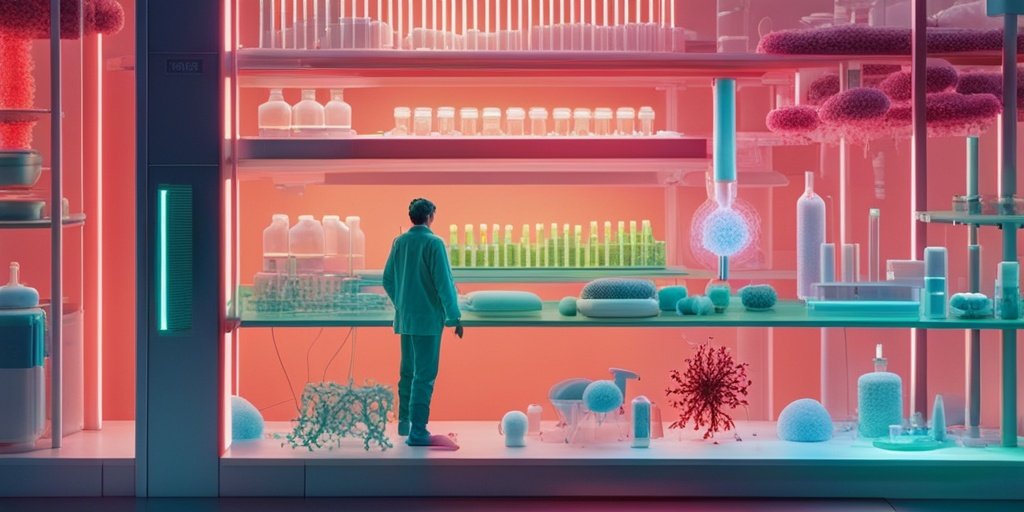⚡ Quick Summary
The emergence of antibiotic resistance has prompted a shift towards antibiofilm strategies for treating infections, as traditional antibiotics often fail against bacteria in biofilms. This article highlights recent advancements in antibiofilm approaches and the potential role of artificial intelligence in discovering novel antibiofilm agents.
🔍 Key Details
- 📊 Focus: Antibiofilm strategies for treating drug-resistant infections
- 🌐 Global Priority: Antibiotic resistance declared a priority by WHO
- 🦠 Biofilms: Structured communities of bacteria that are less susceptible to antibiotics
- 🤖 Technology: Potential synergy with artificial intelligence in drug discovery
🔑 Key Takeaways
- 🦠 Bacterial biofilms pose a significant challenge in treating infections.
- 🚫 Current antibiotics are often ineffective against biofilm-associated bacteria.
- 💡 Antibiofilm strategies are emerging as a promising alternative to traditional antibiotics.
- 🤖 Artificial intelligence may accelerate the design of novel antibiofilm molecules.
- 🌍 Global health implications of antibiotic resistance necessitate innovative solutions.
- 🔬 Research is ongoing to better understand and combat biofilm-related infections.
- 📈 Future studies are needed to validate the effectiveness of new antibiofilm agents.

📚 Background
The rise of antibiotic resistance has become a pressing global health issue, with the World Health Organization emphasizing the need for urgent action. A significant contributor to this problem is the formation of bacterial biofilms, which are communities of bacteria that adhere to surfaces and are encased in a protective matrix. These biofilms make bacteria significantly more resistant to antibiotics compared to their free-floating (planktonic) counterparts, complicating treatment options.
🗒️ Study
This article reviews recent advancements in antibiofilm approaches that aim to tackle the challenges posed by biofilms in bacterial infections. The authors discuss various strategies, including the development of new molecules specifically designed to disrupt biofilm formation and enhance the efficacy of existing antibiotics. Additionally, the potential integration of computational methods and artificial intelligence in the discovery of these novel antibiofilm agents is explored.
📈 Results
The findings suggest that current antibiofilm strategies are promising, yet there remains a lack of approved antibiotics specifically targeting biofilms. The authors highlight the need for further research and development in this area, particularly focusing on the synergy between traditional methods and innovative technologies like AI, which could lead to the rapid identification and optimization of effective antibiofilm compounds.
🌍 Impact and Implications
The implications of this research are profound. By shifting the focus towards antibiofilm strategies, we can potentially improve treatment outcomes for patients suffering from drug-resistant infections. The integration of artificial intelligence into the drug discovery process could expedite the development of new therapies, ultimately contributing to the global fight against antibiotic resistance. This paradigm shift could redefine how we approach infection management in clinical settings.
🔮 Conclusion
The exploration of antibiofilm approaches represents a critical advancement in our battle against antibiotic-resistant infections. As we continue to face the challenges posed by biofilms, the combination of innovative strategies and cutting-edge technologies like artificial intelligence holds great promise for the future of infection treatment. Continued research in this field is essential to develop effective solutions that can enhance patient care and public health outcomes.
💬 Your comments
What are your thoughts on the potential of antibiofilm strategies in combating antibiotic resistance? We invite you to share your insights and engage in a discussion! 💬 Leave your comments below or connect with us on social media:
Antibiofilm approaches as a new paradigm for treating infections.
Abstract
The lack of effective antibiotics for drug-resistant infections has led the World Health Organization to declare antibiotic resistance a global priority. Most bacterial infections are caused by microbes growing in structured communities called biofilms. Bacteria growing in biofilms are less susceptible to antibiotics than their planktonic counterparts. Despite their significant clinical implications, bacterial biofilms have not received the attention they warrant, with no approved antibiotics specifically designed for their eradication. In this paper, we aim to shed light on recent advancements in antibiofilm strategies that offer compelling alternatives to traditional antibiotics. Additionally, we will briefly explore the potential synergy between computational approaches, including the emerging field of artificial intelligence, and the accelerated design and discovery of novel antibiofilm molecules in the years ahead.
Author: [‘Reffuveille F’, ‘Dghoughi Y’, ‘Colin M’, ‘Torres MDT’, ‘de la Fuente-Nunez C’]
Journal: Prog Biomed Eng (Bristol)
Citation: Reffuveille F, et al. Antibiofilm approaches as a new paradigm for treating infections. Antibiofilm approaches as a new paradigm for treating infections. 2024; 6:(unknown pages). doi: 10.1088/2516-1091/ad1cd6